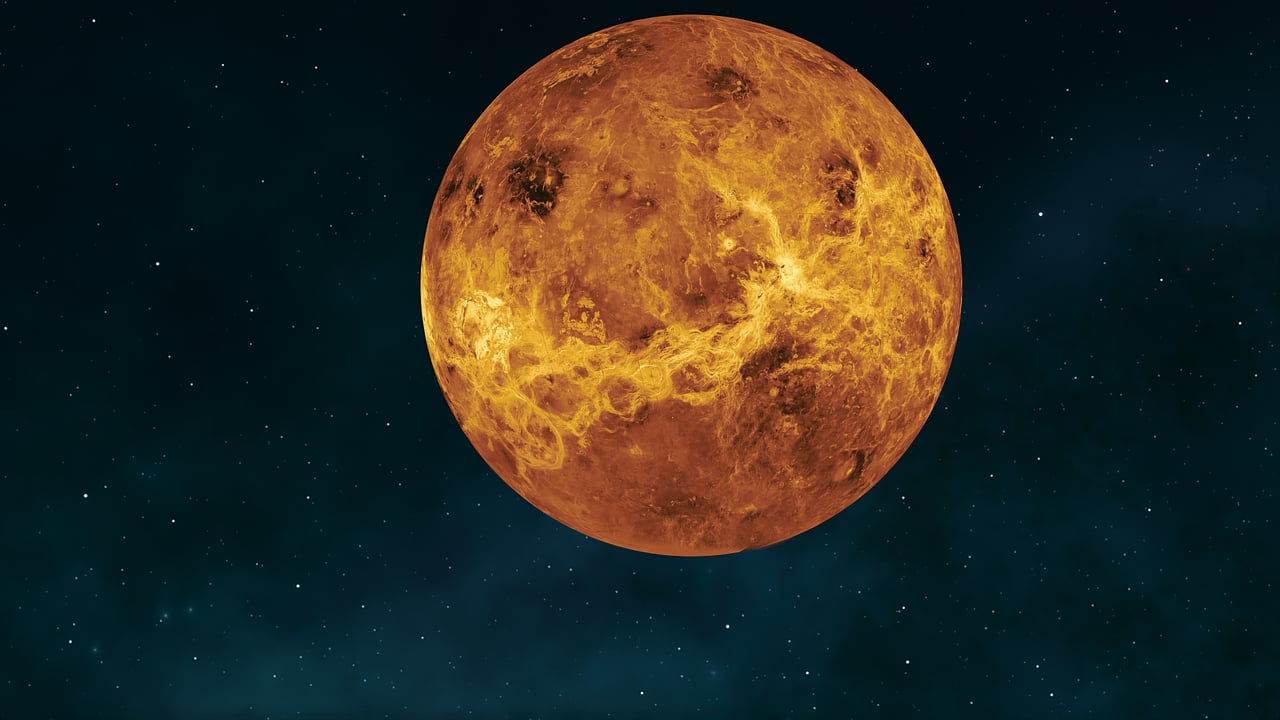YOUR BROWSER IS OUT-OF-DATE.
We have detected that you are using an outdated browser. Our service may not work properly for you. We recommend upgrading or switching to another browser.
Date: 10.04.2025 Category: general news, international cooperation, science/research/innovation

Are sulphuric acid clouds on Venus really so unfriendly to organic structures? The answer to this question was sought by an international team of researchers coordinated by Janusz Pętkowski, PhD of the Faculty of Environmental Engineering. The results of their research have just been published in the journal "Science Advances".
Entitled “Astrobiological Implications of the Stability and Reactivity of Peptide Nucleic Acid (PNA) in Concentrated Sulfuric Acid”, the paper was the result of studies conducted by researchers from Wrocław University of Science and Technology, Massachusetts Institute of Technology (USA), Worcester Polytechnic Institute (USA), Cardiff University (UK), and specialists from the Dutch company Symeres.
 All life on Earth needs water, but can life exist in other, more hostile liquids? This debatable question has recently arisen with the increased interest in Venus, in whose mysterious acidic clouds intriguing chemical signs of life have been found.
All life on Earth needs water, but can life exist in other, more hostile liquids? This debatable question has recently arisen with the increased interest in Venus, in whose mysterious acidic clouds intriguing chemical signs of life have been found.
According to astronomers, the clouds on this human-unfriendly planet, also known as the Morning Star or the Dawn Star, consist mainly of droplets of sulphuric acid with some chlorine and iron, among other substances. Due to the sulphuric acid clouds, the planet's surface isn’t visible from Earth or orbital probes, and its shape is known only from radar surveys.
In mid-2020, a team of scientists from Imperial College London presented evidence for the presence of phosphine, a toxic gas produced in oxygen-poor environments, on Venus, and a group of scientists from Cardiff University shared preliminary results from their research indicating the presence of ammonia on the planet. Both gases are referred to as biomarkers, which – in a nutshell – means that they can indicate the presence of life.
“So, we decided to see if indeed any life could survive in the clouds of sulphuric acid. Many people believe that concentrated sulphuric acid destroys all organic molecules and therefore kills all life, but this isn’t true. While many biochemical substances, for example, sugars, are indeed unstable in such an environment, our research to date has shown that other chemicals found in living organisms, such as nitrogenous bases, amino acids, and some dipeptides, don’t break down,” says Janusz Pętkowski, PhD from the Department of Water and Wastewater Management and Waste Technology at the Faculty of Environmental Engineering.
While researching the subject and seeking answers to the mysteries that may be hiding in the Venusian clouds, the scientists made a surprising discovery: peptide nucleic acid (PNA), a DNA-like molecule, shows remarkable stability in the extremely harsh environment of 98% sulphuric acid at room temperature. The findings are evidence that concentrated sulphuric acid can sustain a variety of chemical reactions in the organic environment that may underlie another form of life other than what we know on Earth.
“So, it seems that sulphuric acid is much more friendly to organic chemistry than anyone thought. The discovery that something similar to DNA can survive in concentrated sulphuric acid for days is astonishing,” the researcher stresses.
By demonstrating that PNA can withstand conditions long considered hostile to complex organic chemistry, the researchers have begun a new chapter in research into the potential of sulphuric acid as a possible environment for life.
“In addition to pushing the boundaries of organic chemistry, it also brings us closer to discovering whether the clouds of Venus can indeed harbour life while challenging our previous knowledge of the planet,” emphasises Dr Pętkowski. “In the light of these findings, it turns out that Venus isn’t simply a shapeless ball of clouds. It’s in fact chemically unusual and in its clouds may be home to life quite different from that on Earth,” he adds.
The researcher also points out that the research that has begun also has more practical applications, i.e. understanding how life is structured and where we can look for signs of it in the universe. It also brings a new understanding of how sulphuric acid, one of the most widely used industrial chemicals, acts.
“Future research will focus on creating a genetic polymer that is stable in concentrated sulphuric acid over the temperature range of the Venus clouds, not just at room temperature. This is because PNA isn’t stable in sulphuric acid at temperatures higher than 50 degrees Celsius,” explains Dr Pętkowski. “The discoveries so far are therefore only the first step towards finding such a stable polymer,” he elaborates.
Our site uses cookies. By continuing to browse the site you agree to our use of cookies in accordance with current browser settings. You can change at any time.